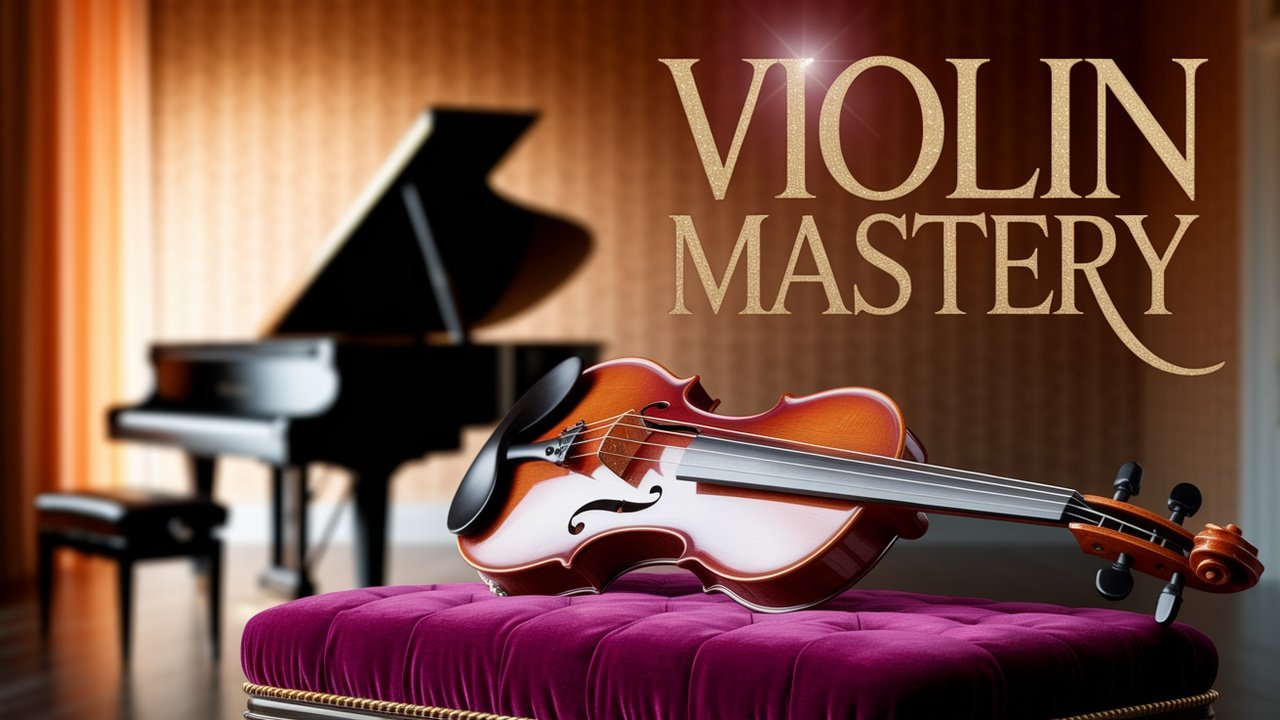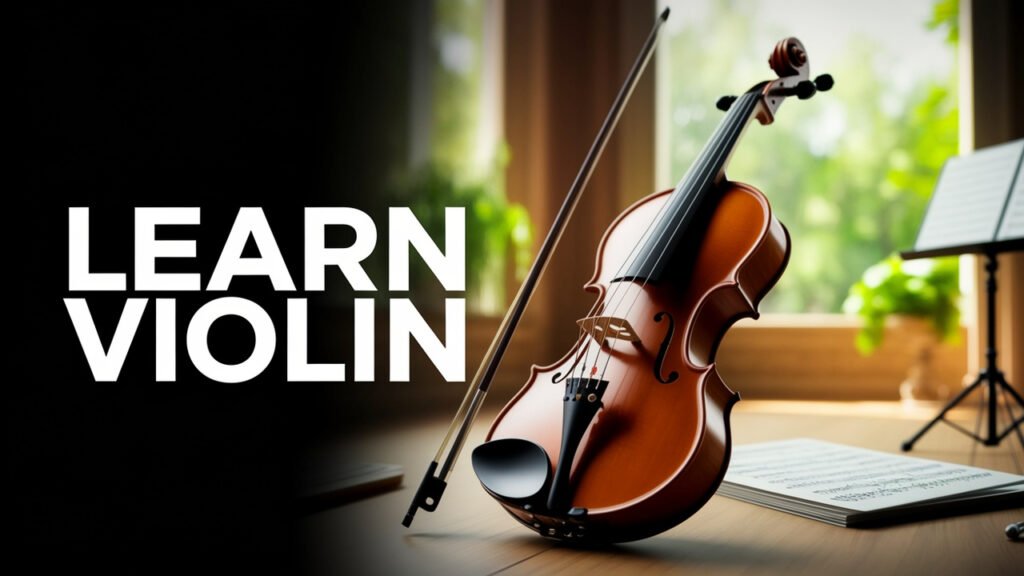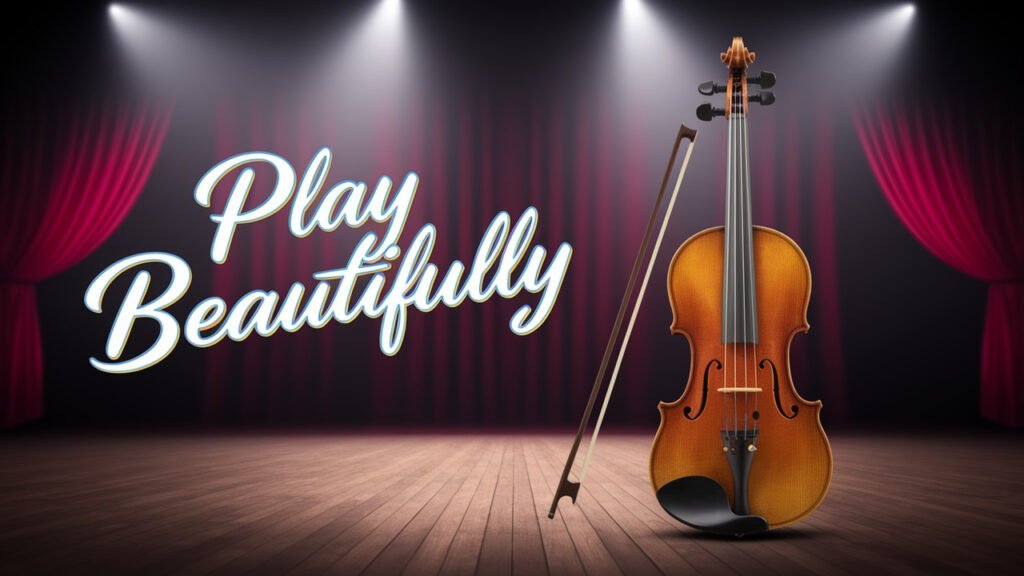The Perfect Fit: Everything You Need to Know About the 3/4 Violin

Introduction: When Size Matters in Music
Choosing the right violin is more than just picking up the first one that looks good. Size plays a critical role, especially for students and younger players. That’s where the 3/4 violin comes in—a perfectly sized instrument tailored for comfort, technique, and musical growth.
Whether you’re a parent looking to buy your child’s first violin, a teacher guiding students, or even an adult with smaller hands, understanding what makes the 3/4 violin a popular and essential choice can transform your musical journey.
From how it’s made, who it’s for, and how it compares to other sizes to buying tips, accessories, and care—this comprehensive guide will take you through everything you need to know about the 3/4 violin.
Chapter 1: What Is a 3/4 Violin?
The 3/4 violin is a fractional-size violin, approximately three-quarters the size of a full-sized (4/4) violin. In terms of dimensions, a 3/4 violin typically measures about 13 inches (body length) and has a total length of about 21 inches, including the scroll.
It is primarily used by:
- Children aged 9 to 12 (or those with an arm length of about 22 to 23.5 inches)
- Smaller-framed adults or teens
- Beginners learning proper finger placement and bow control
While the 3/4 violin is smaller, it still retains much of the tonal quality of a full-size violin, making it a great instrument for learning, practicing, and even performing.
Chapter 2: Size Guide – Why Fractional Violins Matter

One of the biggest misconceptions among new learners is that all violins are the same size. The truth is that using the wrong size violin can lead to poor posture, muscle strain, and bad technique.
Here’s a general violin size chart to put the 3/4 size violin in perspective:
| Violin Size | Approx. Age | Arm Length (inches) |
|---|---|---|
| 1/16 | 3–5 | 14–15.5 |
| 1/10 | 4–5 | 15–17 |
| 1/8 | 5–6 | 17–18.5 |
| 1/4 | 6–7 | 18.5–20 |
| 1/2 | 7–9 | 20–22 |
| 3/4 | 9–12 | 22–23.5 |
| 4/4 (Full) | 12+ | 23.5+ |
The 3/4 size violin is the last step before transitioning to a full-sized instrument, and it’s a critical stage in a student’s development, allowing them to build confidence and technique without struggling with an oversized instrument.
Chapter 3: Anatomy of a 3/4 Violin
Just like full-sized violins, the 3/4 violin includes all the standard parts:
- Body: The hollow wooden structure that amplifies sound
- Neck and Fingerboard: Where the left hand presses strings to create notes
- Pegs and Scroll: Used for tuning and aesthetic
- Bridge: Supports the strings and transfers vibration to the body
- Tailpiece and Fine Tuners: Connects strings to the body and allows for micro-tuning
- Bow: Usually shorter for 3/4 size, about 27 inches long
The materials used—typically spruce for the top and maple for the back, sides, and neck—remain consistent with full-size violins, ensuring similar tonal characteristics.
Chapter 4: The Sound of a 3/4 Violin – What to Expect
While smaller than a full-size instrument, the 3/4 violin still delivers a rich, warm sound suitable for most student performances. However, some differences include:
- Slightly less projection and volume
- A brighter tone in some cases
- Easier control for vibrato and bowing, especially for children
That said, the tonal quality heavily depends on craftsmanship, strings, and setup. A well-made 3/4 violin can still produce an impressive sound and is more than capable of handling beginner to intermediate level performances.
Chapter 5: Who Should Use a 3/4 Violin?

5.1 Children and Pre-teens
Most commonly, the 3/4 violin is suited for children aged 9–12, which is typically when students are advancing in skill and need a violin that complements their growing arm length and hand size.
5.2 Petite Adults
Some adults with smaller frames or hand sizes may find a 3/4 violin more comfortable, especially if they’re picking up the instrument later in life. There’s no shame in choosing comfort over tradition—playing well is more important than playing big.
5.3 Transitioning Players
Students graduating from smaller sizes (like 1/2) may spend a year or two with a 3/4 before moving up. It provides the perfect intermediate step before jumping into the demands of a full-sized instrument.
Chapter 6: Buying a 3/4 Violin – What to Look For
When purchasing a 3/4 violin, consider the following:
6.1 Quality of Craftsmanship
- Solid wood vs. laminate: Solid spruce and maple produce better sound than cheaper plywood
- Hand-carved tops and backs are superior to those of machine-pressed instruments.
6.2 Setup
A good setup includes:
- Properly shaped bridge
- Smooth fingerboard
- Responsive pegs and tuners
6.3 Outfit or Individual?
Many 3/4 violins are sold as outfits, which include:
- Violin
- Bow
- Case
- Rosin
- Extra strings
This is great for beginners, but intermediate players may prefer selecting items individually for better quality.
6.4 Brand Recommendations
Some reputable 3/4 violin brands include:
- Cecilio
- Eastman
- Fiddlerman
- Stentor
- Yamaha
These offer a balance of quality and affordability for students.
Chapter 7: Caring for Your 3/4 Violin
To keep your 3/4 violin sounding its best:
- Wipe it down after each use to remove rosin dust
- Store it in a climate-controlled case
- Please keep it away from heat and humidity
- Regularly check the bridge and strings
- Rehair your bow every 6–12 months
Routine maintenance will extend the life of your instrument and ensure you get the best sound.
Chapter 8: Advancing from 3/4 to Full Size
Once a player has grown physically and musically, the next step is the transition to a 4/4 violin. Here’s how to know it’s time:
- The arm fully extends past the scroll when holding the 3/4
- Teacher recommendation
- Student complains of feeling cramped or limited
Transitioning is exciting, and by this point, most students are confident in their technique, making the move up a smooth one.
Conclusion: Why the 3/4 Violin Is More Than Just a “Small” Instrument
The 3/4 violin is not just a smaller version of the full-size violin—it’s a gateway to learning, growth, and confidence in playing. Perfectly suited for students and smaller players, it provides an opportunity to learn correct posture, bowing, and technique without the strain of an oversized instrument.
Its accessible size, quality sound, and ease of play make it an essential choice for anyone beginning their musical journey or needing an appropriately sized instrument. Whether you’re buying for your child or considering one for yourself, the 3/4 violin is a smart, strategic step on the path to becoming a skilled violinist.






